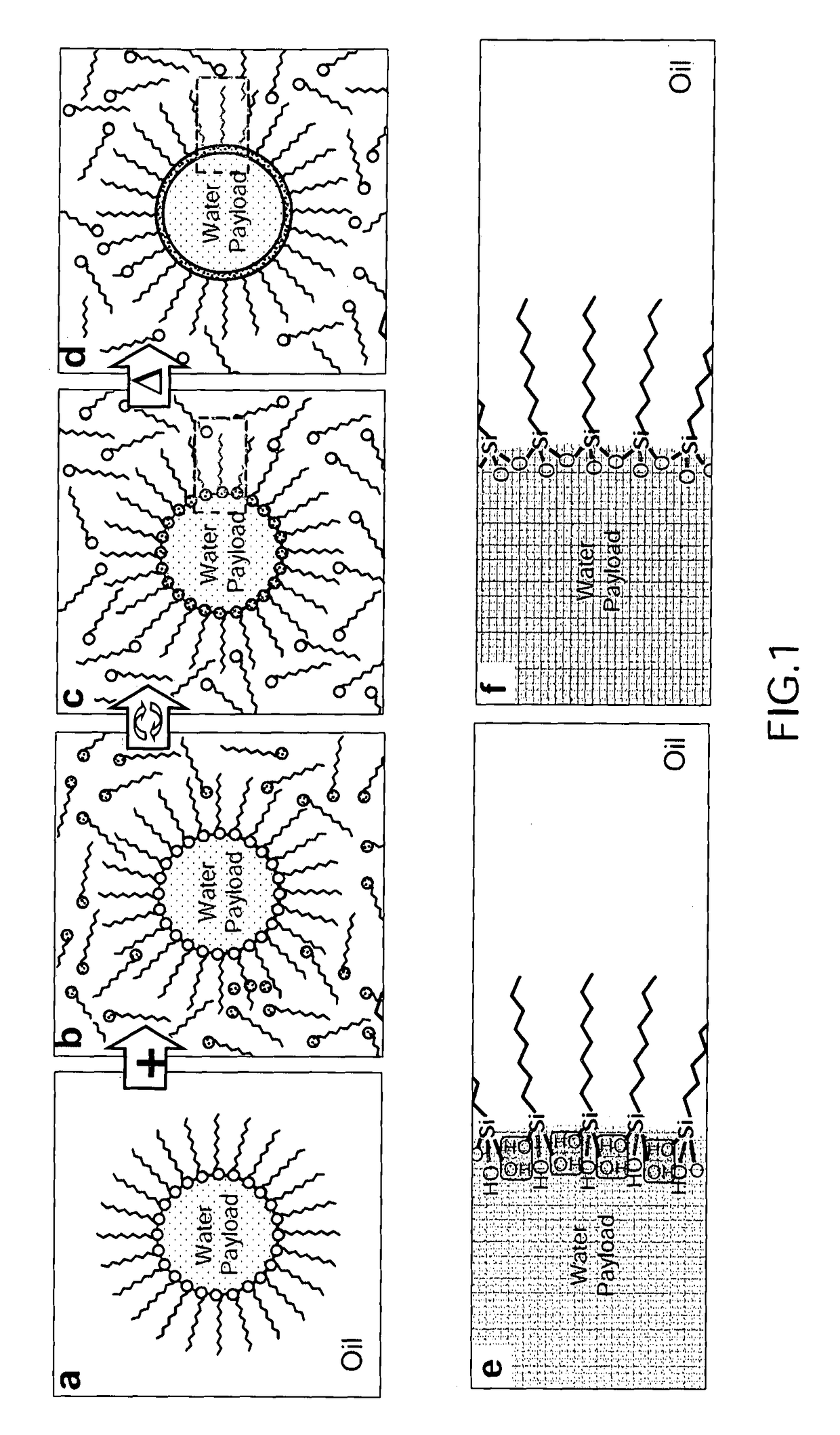Two-dimensional polymeric structures and method for producing thereof
a polymer structure and two-dimensional technology, applied in the field of nanotechnology, material science, biomedicine, can solve the problems of ineffective polymer-based capsules, insufficient techniques to fabricate truly impermeable single-walled capsules with controllable release, and insufficient production methods of polymer-based capsules, etc., and achieve the effect of efficient method for producing the sam
- Summary
- Abstract
- Description
- Claims
- Application Information
AI Technical Summary
Benefits of technology
Problems solved by technology
Method used
Image
Examples
example 1
[0139]A new class of ultrathin, single-walled hollow silica nanocapsules have been developed, consisting of a fluid inner core and a monolayer of silica shell. Different from other polymer-based systems, silica nanocapsules disclosed herein are strong yet highly sensitive to external stimuli, and uniquely multifunctional. Analyses performed on the monolayer silica nanocapsules reveal striking mechanical properties and rich condense matter physics in such silica nanocapsules. They are impermeable to water molecules, strong to hold the integrity in vacuum, fragile to local flow shearing forces and ultrasound waves, and flexible and fusible like soap bubbles. In particular, their unique ultrasound fragility is particularly suitable in controlled drug delivery.
[0140]The principle of self-assembly for the synthesis is illustrated in FIG. 1. In the first step (FIG. 1a), a water-in-oil nanoemulsion system is formed by dispersing a pre-calculated amount of water containing ammonium hydroxid...
example 2
[0160]In a similar approach planar single layered silica membranes have been also fabricated. Similar to the previous example, a biphasic system is employed to fabricate the membrane at the water-oil interface. In this fabrication, the two phases remain two separated layers due to their immiscibility and the gravity, and no surfactant is involved. The typical preparation procedure involves: 1) prepare a mixture of 2 mL water and 1 mL 28% ammonia in a 6-mL vial; 2) slowly and steadily add 3 mL cyclohexane without inducing mixing; 3) add 10 pL octyltrichlorosilane into the top cyclohexane layer; 4) let the reaction proceed in still for at least 18 hours; 5) heat the system at 70° C. for at least two hours in still without stirring; 6) remove unreacted octyltrichlorosilane by repeatedly removing and refilling the top cyclohexane layer slowly and steadily for at least five times. After the procedure, an organosilica (i.e. polysiloxane) membrane is available separating the two liquid pha...
PUM
 Login to View More
Login to View More Abstract
Description
Claims
Application Information
 Login to View More
Login to View More - R&D
- Intellectual Property
- Life Sciences
- Materials
- Tech Scout
- Unparalleled Data Quality
- Higher Quality Content
- 60% Fewer Hallucinations
Browse by: Latest US Patents, China's latest patents, Technical Efficacy Thesaurus, Application Domain, Technology Topic, Popular Technical Reports.
© 2025 PatSnap. All rights reserved.Legal|Privacy policy|Modern Slavery Act Transparency Statement|Sitemap|About US| Contact US: help@patsnap.com



